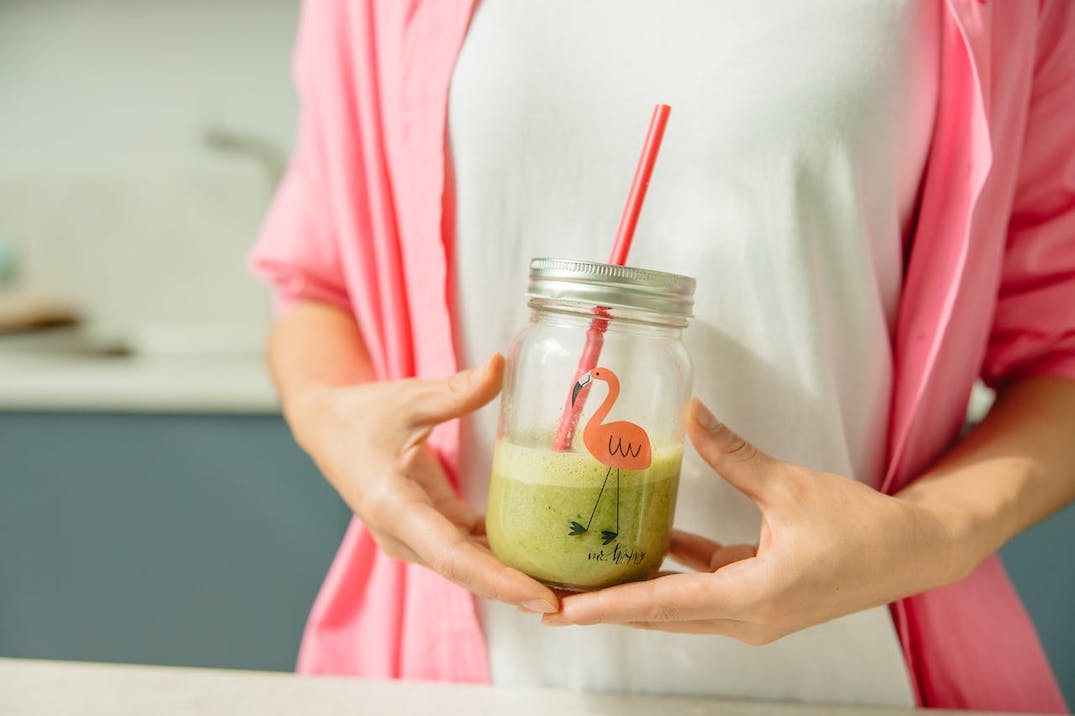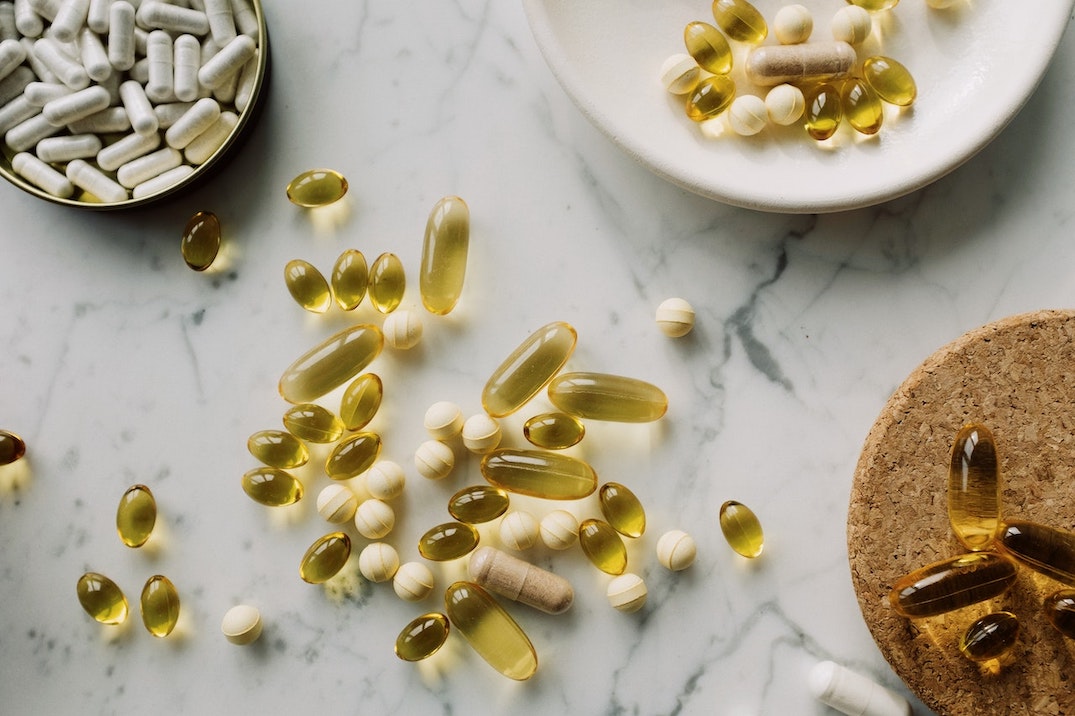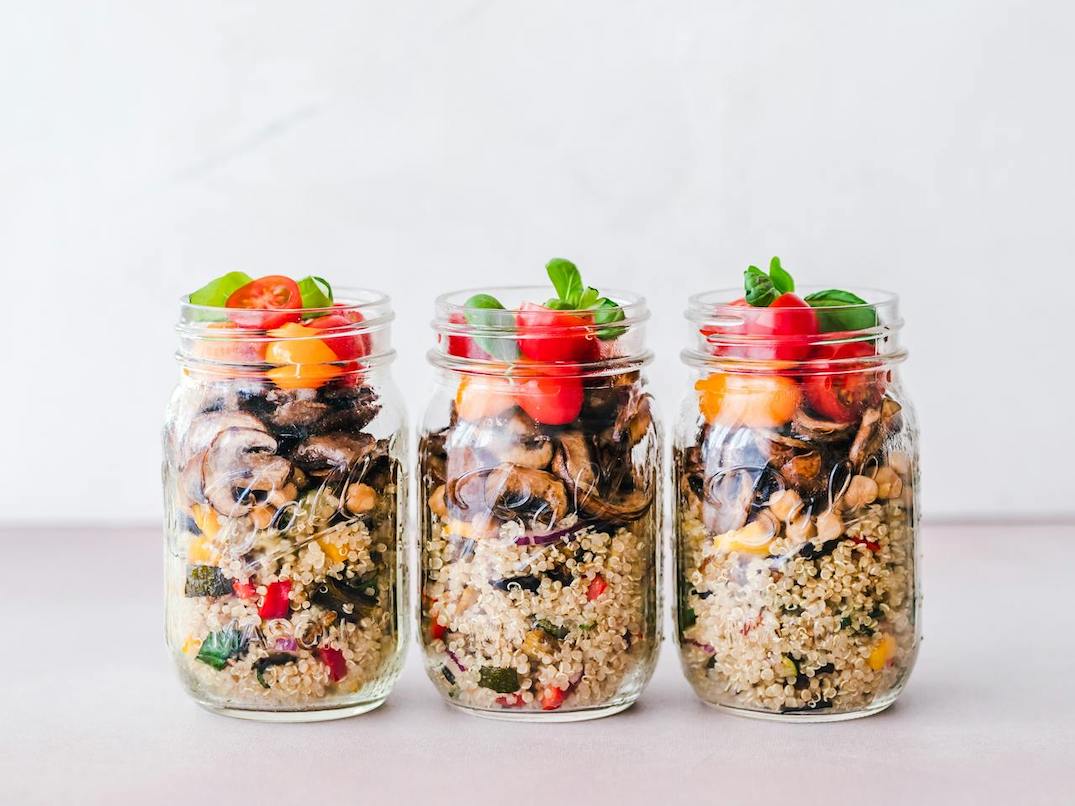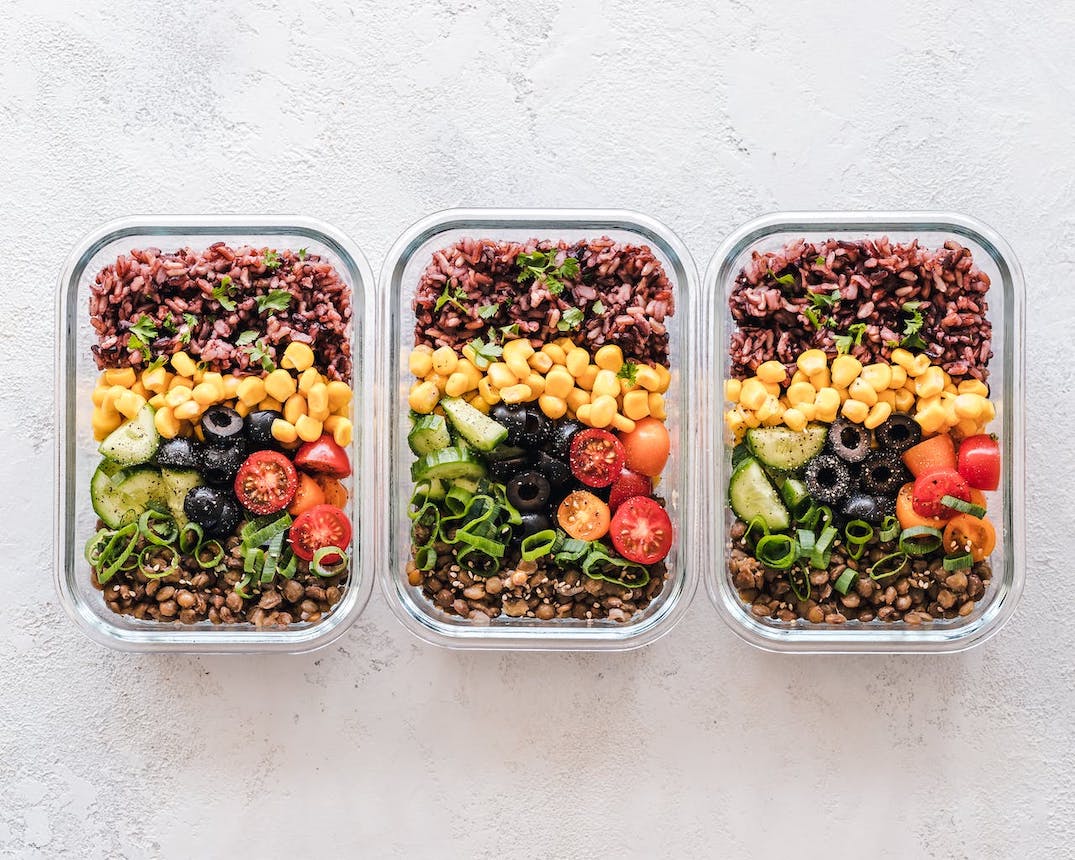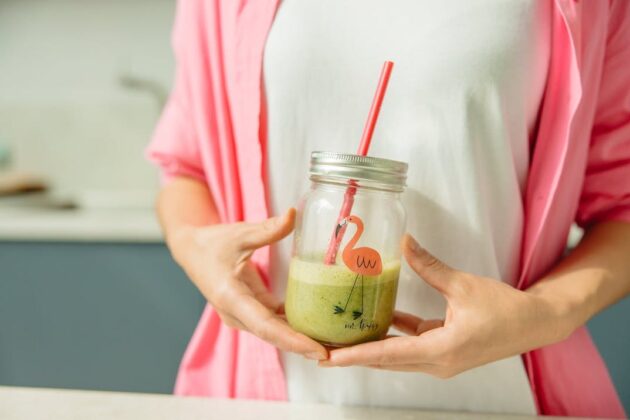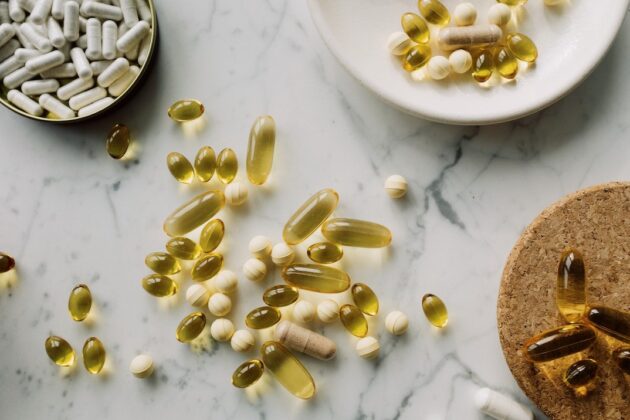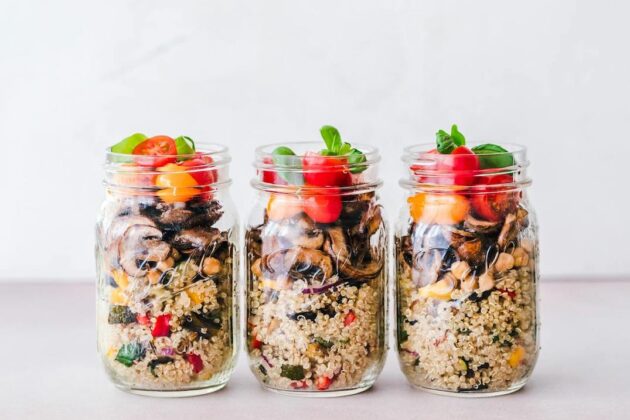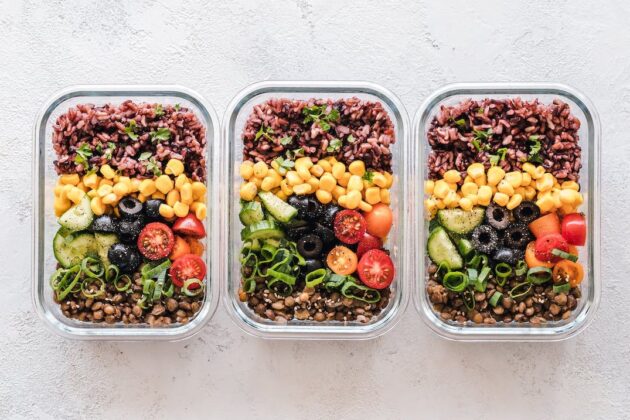7-Day Meal Plan for Gastritis + Best & Worst Foods to Eat (with printable PDF)
If you suffer from gastritis, you know that what you eat makes a big difference in how you feel.
While food itself does not cause chronic gastritis, certain foods can make symptoms worse. Unfortunately, dietary restrictions that are a result of this condition can take the joy out of eating and make holidays and events a challenge.
If you’ve been struggling with deciding what to eat to manage gastritis symptoms, you’re in the right place.
Choosing a diet high in fiber and low in fat and acidic foods can help, and we’ll show you what that looks like.
This guide goes over a sample 7-day gastritis meal plan, the best foods to eat with gastritis, which to avoid, and everything else you need to know. If you’d like to view a PDF of our sample gastritis meal plan, click here.

Improve your gut health with support from a Registered Dietitian
90% of Zaya Care patients pay $0 for dietitian visits
Foods to avoid with gastritis
Cutting foods you love out of your diet stinks. Unfortunately, with gastritis, you learn quickly that the benefits far outweigh having to say goodbye to certain foods. Not only can some foods trigger gastritis symptoms, but they can also make these symptoms worse.
Below are foods to avoid if you suffer from uncomfortable symptoms of chronic gastritis:
- Spicy foods. Spicy foods, such as chili peppers and spicy condiments, can irritate and inflame the stomach lining, causing pain and discomfort in those with chronic gastritis.
- Fried and fatty foods. High-fat or fried foods such as fried chicken, hamburgers, and pizza can also cause inflammation and irritation within the stomach lining, causing or exacerbating a gastritis flare-up.
- Barbeque. Foods commonly consumed at barbeques may also worsen gastritis symptoms in some individuals. This could be related to the high-fat content or seasonings often used for these foods.
- Citrus fruits. Citrus fruits such as lemons, limes, oranges, and grapefruit should be avoided as the high acid content may damage and irritate the stomach lining, triggering uncomfortable symptoms.
- Tomatoes and tomato-based products. Tomato and tomato-based products such as marinara sauces are also highly acidic and can irritate the stomach lining and trigger painful symptoms.
- Chocolate and other desserts. Sweet treats tend to be high in both sugar and fat, which may irritate the stomach. Additionally, chocolate is acidic and contains caffeine which can potentially increase discomfort.
- Caffeinated beverages. Caffeine increases gastric motility. Consuming caffeinated foods and beverages can cause the stomach to contract more frequently as well as increase the production of stomach acid, causing inflammation.
- Carbonate beverages and alcohol. Like caffeine, carbonated beverages and alcohol can increase acid production and irritate the stomach lining.
- Processed meats. The chemical additives, preservatives, and high-fat content of most processed meats, such as deli meat, bacon, and sausage, can exacerbate the stomach lining and worsen gastritis symptoms.
- Dairy products. Full-fat dairy products can irritate the stomach lining and increase acid production. Dairy should be limited or avoided in those with chronic gastritis, especially if lactose intolerant.
Best foods to eat with gastritis
Now that you know more about what foods you should avoid for chronic gastritis, let’s look at the foods that you want to eat more of.
These are foods that won’t cause or worsen gastritis symptoms and may improve gut health:
- Lean proteins (chicken, fish, tofu). Low-fat meats are the best way to get protein in your diet as saturated fats from fattier proteins such as red meat can irritate the stomach lining and worsen symptoms.
- Non-citrus fruits (bananas, apples, melons). Low-acid-content fruits are a great addition to a gastritis diet to incorporate more essential vitamins and minerals along with dietary fiber, which has a positive impact on gut health.
- Vegetables (leafy greens, carrots, beets). Veggies are packed with antioxidant and anti-inflammatory compounds that can help promote gut health. They are also a good source of dietary fiber.
- Whole grains (oats, brown rice, barley). Along with fruits and veggies, whole grains are an excellent source of dietary fiber that improves gut health and reduces inflammation. The best whole-grain options are less processed, such as quinoa or brown rice.
- Probiotic-rich foods (yogurt, kefir). Probiotics can help boost gut health and improve gastritis in those with H-pylori bacteria which is the most common cause of gastritis and stomach ulcers.
- Ginger. Ginger root is known for its calming properties. It is a safe and effective way to quell stomach pain from gastritis and may even have protective effects due to the antioxidant content and other plant compounds present.
- Herbal teas. Herbal teas, particularly chamomile tea, can help with reducing inflammation. It may also help lower gastric acidity which may improve symptoms of gastritis.
- Almonds and other nuts (in moderation). While high-fat foods are discouraged for those with gastritis, healthy fats from foods such as nuts and seeds can be beneficial. The fiber and antioxidant content can help support a healthy stomach lining and may even protect against stomach lesions from gastritis.
- Potatoes and sweet potatoes. Potatoes and sweet potatoes are rich sources of fiber and antioxidants that aid in digestion and promote a healthy gut.

Improve your gut health with support from a Registered Dietitian
90% of Zaya Care patients pay $0 for dietitian visits
7-day meal plan for gastritis
Here is a sample 7-day gastritis meal plan that includes many of the best foods listed above while avoiding those that can worsen gastritis symptoms.
Remember, talking to your doctor and/or dietitian before changing your diet is important to learn what is best for you. Your ideal diet may have more or fewer calories and incorporate different foods based on your food intolerances, preferences, and the presence of other medical conditions.
We recommend working with a Registered Dietitian to find the ideal gastritis meal plan for your situation.
>> Click here to view our 7-day gastritis meal plan PDF
Day 1
- Breakfast: Oatmeal topped with sliced bananas and a dash of cinnamon
- Lunch: Grilled chicken salad with mixed greens, carrots, and a light olive oil dressing
- Dinner: Baked salmon with steamed broccoli and quinoa
- Snacks: Apple slices; a handful of almonds
Day 2
- Breakfast: Greek yogurt with honey and almonds
- Lunch: Vegetable stir-fry with tofu
- Dinner: Baked chicken breast with sweet potato and green beans
- Snacks: Banana; carrot sticks
Day 3
- Breakfast: Smoothie with spinach, banana, and almond milk
- Lunch: Quinoa salad with cucumbers, tomatoes (for those who can tolerate them), and feta cheese
- Dinner: Grilled fish with a side salad and boiled potatoes
- Snacks: Sliced melon; yogurt
Day 4
- Breakfast: Scrambled eggs with spinach and whole-grain toast
- Lunch: Tuna salad (light on mayo) with lettuce wraps
- Dinner: Stir-fried tofu with broccoli and bell peppers over brown rice
- Snacks: Apple slices; a handful of almonds
Day 5
- Breakfast: Banana oat pancakes (made with bananas, oats, and eggs)
- Lunch: Chicken soup with vegetables and a side of whole grain bread
- Dinner: Baked cod with asparagus and quinoa
- Snacks: Greek yogurt; carrot sticks
Day 6
- Breakfast: Mashed avocado on whole grain toast with a side of scrambled eggs
- Lunch: Brown rice bowl with grilled chicken, kale, and sliced almonds
- Dinner: Baked sweet potato stuffed with sautéed spinach and feta
- Snacks: Banana; a handful of almonds
Day 7
- Breakfast: Greek yogurt with mixed berries and a sprinkle of granola
- Lunch: Lentil soup with a side salad
- Dinner: Grilled salmon with steamed carrots and brown rice
- Snacks: Sliced apples; yogurt
Tips for making your gastritis meal plan work for you
Knowing what you should and shouldn’t eat when suffering from gastritis can be helpful, but the real challenge comes with putting it all together.
Below are some tips for making your gastritis meal plan work for you:
- Focus on whole foods that you enjoy. Just because a certain food is on the list of things to eat more of, that doesn’t mean you have to force yourself to eat something you don’t like. Instead, focus on the whole foods you do like and go from there.
- Meal prep before each week. Planning ahead can help you stay on track and avoid grabbing tempting or convenient foods that may irritate your gastritis. Make a list and be intentional when you go to the store, so you are stocked up on the foods you need.
- Reduce how much you eat out. Eating in restaurants frequently can increase the chances of irritating your gastritis as these foods are often high in fat, sodium, and/or sugar. If you do eat out, try to make lighter choices such as choosing grilled chicken instead of fried.
- Slow down while you eat. People who eat fast often eat larger portions which can cause food to sit in the stomach longer. This means your mucosal lining is exposed to gastric secretions longer which can irritate your stomach lining.
- Eat consistent amounts & at regular times each day. Eating smaller, more frequent meals regularly throughout the day can help to maintain a steady level of gastric acid in the gut. This can help alleviate gastritis symptoms versus choosing large meals sporadically.
- Stay hydrated. It’s important to stay hydrated if you suffer from gastritis as this can help to better regulate the levels of gastric juices in your stomach. However, it’s important to avoid drinking large volumes of water in one sitting, especially right before a meal.
- Reduce/eliminate alcohol. Alcohol can irritate the stomach lining. Alcoholic beverages can also include a lot of added sugars and acidic or carbonated ingredients which can further worsen symptoms.
- Avoid smoking. Exposure to smoke and nicotine from cigarettes can worsen gastritis by increasing inflammation and damage to our gastric mucosa. Try smoking cessation to help with symptom management.
- Snack with intention. Snacking frequently and sporadically throughout the day can irritate digestion and cause extended exposure of our stomach lining to gastric juices. Snacking is okay but do so with intention. Plan to have a small snack between meals.
- Be prepared during outings. The warmer months tend to bring many outdoor get-togethers. If you find yourself at these events, consider planning ahead by bringing gastritis-safe foods with you or by eating before attending to reduce the chances of irritation from these foods.
- Manage your weight. Overweight and obesity is a risk factor for developing gastritis. Managing your weight can reduce this risk. It can also help to reduce symptoms in those who already suffer from gastritis.
Why we recommend working with a Registered Dietitian if you have gastritis
Gastritis is uncomfortable and can be life-altering. There are many restrictions when it comes to foods and beverages, and it can be overwhelming to try and manage on your own. While the internet is rife with information, not all of it is accurate and what is can be hard to find.
Instead of struggling to manage your gastritis by yourself, consider working with a Registered Dietitian (RD). RDs are nutrition professionals who can help provide support and guidance to those with conditions like gastritis. Some RDs even specialize in gastrointestinal disorders and gut health.
An RD will ask you questions to learn about your current diet habits, preferences, and symptoms. They can help you identify trigger foods and can build you a personal plan that avoids triggers, meets your nutrition needs, and that you can follow long-term.
Just because you have this condition doesn’t mean you have to eat bland foods that you don’t enjoy. With the help of an RD, you will have a personalized approach to managing your gastritis through diet so you can continue to enjoy food.
You can use Zayacare’s free Dietitian Search Tool to take the first step toward better health and a more comfortable gut with an RD on your side.
When you request an appointment with one of our Registered Dietitians here at Zaya Care, we’ll check your insurance so you know exactly how much you’ll have to pay, if anything at all.
It’s worth noting that 90% of Zaya Care patients pay $0 for nutrition care with a registered dietitian as we are in-network with many major carriers.

Improve your gut health with support from a Registered Dietitian
90% of Zaya Care patients pay $0 for dietitian visits
If you suffer from gastritis, you know that what you eat makes a big difference in how you feel.
While food itself does not cause chronic gastritis, certain foods can make symptoms worse. Unfortunately, dietary restrictions that are a result of this condition can take the joy out of eating and make holidays and events a challenge.
If you’ve been struggling with deciding what to eat to manage gastritis symptoms, you’re in the right place.
Choosing a diet high in fiber and low in fat and acidic foods can help, and we’ll show you what that looks like.
This guide goes over a sample 7-day gastritis meal plan, the best foods to eat with gastritis, which to avoid, and everything else you need to know. If you’d like to view a PDF of our sample gastritis meal plan, click here.

Improve your gut health with support from a Registered Dietitian
90% of Zaya Care patients pay $0 for dietitian visits
Foods to avoid with gastritis
Cutting foods you love out of your diet stinks. Unfortunately, with gastritis, you learn quickly that the benefits far outweigh having to say goodbye to certain foods. Not only can some foods trigger gastritis symptoms, but they can also make these symptoms worse.
Below are foods to avoid if you suffer from uncomfortable symptoms of chronic gastritis:
- Spicy foods. Spicy foods, such as chili peppers and spicy condiments, can irritate and inflame the stomach lining, causing pain and discomfort in those with chronic gastritis.
- Fried and fatty foods. High-fat or fried foods such as fried chicken, hamburgers, and pizza can also cause inflammation and irritation within the stomach lining, causing or exacerbating a gastritis flare-up.
- Barbeque. Foods commonly consumed at barbeques may also worsen gastritis symptoms in some individuals. This could be related to the high-fat content or seasonings often used for these foods.
- Citrus fruits. Citrus fruits such as lemons, limes, oranges, and grapefruit should be avoided as the high acid content may damage and irritate the stomach lining, triggering uncomfortable symptoms.
- Tomatoes and tomato-based products. Tomato and tomato-based products such as marinara sauces are also highly acidic and can irritate the stomach lining and trigger painful symptoms.
- Chocolate and other desserts. Sweet treats tend to be high in both sugar and fat, which may irritate the stomach. Additionally, chocolate is acidic and contains caffeine which can potentially increase discomfort.
- Caffeinated beverages. Caffeine increases gastric motility. Consuming caffeinated foods and beverages can cause the stomach to contract more frequently as well as increase the production of stomach acid, causing inflammation.
- Carbonate beverages and alcohol. Like caffeine, carbonated beverages and alcohol can increase acid production and irritate the stomach lining.
- Processed meats. The chemical additives, preservatives, and high-fat content of most processed meats, such as deli meat, bacon, and sausage, can exacerbate the stomach lining and worsen gastritis symptoms.
- Dairy products. Full-fat dairy products can irritate the stomach lining and increase acid production. Dairy should be limited or avoided in those with chronic gastritis, especially if lactose intolerant.
Best foods to eat with gastritis
Now that you know more about what foods you should avoid for chronic gastritis, let’s look at the foods that you want to eat more of.
These are foods that won’t cause or worsen gastritis symptoms and may improve gut health:
- Lean proteins (chicken, fish, tofu). Low-fat meats are the best way to get protein in your diet as saturated fats from fattier proteins such as red meat can irritate the stomach lining and worsen symptoms.
- Non-citrus fruits (bananas, apples, melons). Low-acid-content fruits are a great addition to a gastritis diet to incorporate more essential vitamins and minerals along with dietary fiber, which has a positive impact on gut health.
- Vegetables (leafy greens, carrots, beets). Veggies are packed with antioxidant and anti-inflammatory compounds that can help promote gut health. They are also a good source of dietary fiber.
- Whole grains (oats, brown rice, barley). Along with fruits and veggies, whole grains are an excellent source of dietary fiber that improves gut health and reduces inflammation. The best whole-grain options are less processed, such as quinoa or brown rice.
- Probiotic-rich foods (yogurt, kefir). Probiotics can help boost gut health and improve gastritis in those with H-pylori bacteria which is the most common cause of gastritis and stomach ulcers.
- Ginger. Ginger root is known for its calming properties. It is a safe and effective way to quell stomach pain from gastritis and may even have protective effects due to the antioxidant content and other plant compounds present.
- Herbal teas. Herbal teas, particularly chamomile tea, can help with reducing inflammation. It may also help lower gastric acidity which may improve symptoms of gastritis.
- Almonds and other nuts (in moderation). While high-fat foods are discouraged for those with gastritis, healthy fats from foods such as nuts and seeds can be beneficial. The fiber and antioxidant content can help support a healthy stomach lining and may even protect against stomach lesions from gastritis.
- Potatoes and sweet potatoes. Potatoes and sweet potatoes are rich sources of fiber and antioxidants that aid in digestion and promote a healthy gut.

Improve your gut health with support from a Registered Dietitian
90% of Zaya Care patients pay $0 for dietitian visits
7-day meal plan for gastritis
Here is a sample 7-day gastritis meal plan that includes many of the best foods listed above while avoiding those that can worsen gastritis symptoms.
Remember, talking to your doctor and/or dietitian before changing your diet is important to learn what is best for you. Your ideal diet may have more or fewer calories and incorporate different foods based on your food intolerances, preferences, and the presence of other medical conditions.
We recommend working with a Registered Dietitian to find the ideal gastritis meal plan for your situation.
>> Click here to view our 7-day gastritis meal plan PDF
Day 1
- Breakfast: Oatmeal topped with sliced bananas and a dash of cinnamon
- Lunch: Grilled chicken salad with mixed greens, carrots, and a light olive oil dressing
- Dinner: Baked salmon with steamed broccoli and quinoa
- Snacks: Apple slices; a handful of almonds
Day 2
- Breakfast: Greek yogurt with honey and almonds
- Lunch: Vegetable stir-fry with tofu
- Dinner: Baked chicken breast with sweet potato and green beans
- Snacks: Banana; carrot sticks
Day 3
- Breakfast: Smoothie with spinach, banana, and almond milk
- Lunch: Quinoa salad with cucumbers, tomatoes (for those who can tolerate them), and feta cheese
- Dinner: Grilled fish with a side salad and boiled potatoes
- Snacks: Sliced melon; yogurt
Day 4
- Breakfast: Scrambled eggs with spinach and whole-grain toast
- Lunch: Tuna salad (light on mayo) with lettuce wraps
- Dinner: Stir-fried tofu with broccoli and bell peppers over brown rice
- Snacks: Apple slices; a handful of almonds
Day 5
- Breakfast: Banana oat pancakes (made with bananas, oats, and eggs)
- Lunch: Chicken soup with vegetables and a side of whole grain bread
- Dinner: Baked cod with asparagus and quinoa
- Snacks: Greek yogurt; carrot sticks
Day 6
- Breakfast: Mashed avocado on whole grain toast with a side of scrambled eggs
- Lunch: Brown rice bowl with grilled chicken, kale, and sliced almonds
- Dinner: Baked sweet potato stuffed with sautéed spinach and feta
- Snacks: Banana; a handful of almonds
Day 7
- Breakfast: Greek yogurt with mixed berries and a sprinkle of granola
- Lunch: Lentil soup with a side salad
- Dinner: Grilled salmon with steamed carrots and brown rice
- Snacks: Sliced apples; yogurt
Tips for making your gastritis meal plan work for you
Knowing what you should and shouldn’t eat when suffering from gastritis can be helpful, but the real challenge comes with putting it all together.
Below are some tips for making your gastritis meal plan work for you:
- Focus on whole foods that you enjoy. Just because a certain food is on the list of things to eat more of, that doesn’t mean you have to force yourself to eat something you don’t like. Instead, focus on the whole foods you do like and go from there.
- Meal prep before each week. Planning ahead can help you stay on track and avoid grabbing tempting or convenient foods that may irritate your gastritis. Make a list and be intentional when you go to the store, so you are stocked up on the foods you need.
- Reduce how much you eat out. Eating in restaurants frequently can increase the chances of irritating your gastritis as these foods are often high in fat, sodium, and/or sugar. If you do eat out, try to make lighter choices such as choosing grilled chicken instead of fried.
- Slow down while you eat. People who eat fast often eat larger portions which can cause food to sit in the stomach longer. This means your mucosal lining is exposed to gastric secretions longer which can irritate your stomach lining.
- Eat consistent amounts & at regular times each day. Eating smaller, more frequent meals regularly throughout the day can help to maintain a steady level of gastric acid in the gut. This can help alleviate gastritis symptoms versus choosing large meals sporadically.
- Stay hydrated. It’s important to stay hydrated if you suffer from gastritis as this can help to better regulate the levels of gastric juices in your stomach. However, it’s important to avoid drinking large volumes of water in one sitting, especially right before a meal.
- Reduce/eliminate alcohol. Alcohol can irritate the stomach lining. Alcoholic beverages can also include a lot of added sugars and acidic or carbonated ingredients which can further worsen symptoms.
- Avoid smoking. Exposure to smoke and nicotine from cigarettes can worsen gastritis by increasing inflammation and damage to our gastric mucosa. Try smoking cessation to help with symptom management.
- Snack with intention. Snacking frequently and sporadically throughout the day can irritate digestion and cause extended exposure of our stomach lining to gastric juices. Snacking is okay but do so with intention. Plan to have a small snack between meals.
- Be prepared during outings. The warmer months tend to bring many outdoor get-togethers. If you find yourself at these events, consider planning ahead by bringing gastritis-safe foods with you or by eating before attending to reduce the chances of irritation from these foods.
- Manage your weight. Overweight and obesity is a risk factor for developing gastritis. Managing your weight can reduce this risk. It can also help to reduce symptoms in those who already suffer from gastritis.
Why we recommend working with a Registered Dietitian if you have gastritis
Gastritis is uncomfortable and can be life-altering. There are many restrictions when it comes to foods and beverages, and it can be overwhelming to try and manage on your own. While the internet is rife with information, not all of it is accurate and what is can be hard to find.
Instead of struggling to manage your gastritis by yourself, consider working with a Registered Dietitian (RD). RDs are nutrition professionals who can help provide support and guidance to those with conditions like gastritis. Some RDs even specialize in gastrointestinal disorders and gut health.
An RD will ask you questions to learn about your current diet habits, preferences, and symptoms. They can help you identify trigger foods and can build you a personal plan that avoids triggers, meets your nutrition needs, and that you can follow long-term.
Just because you have this condition doesn’t mean you have to eat bland foods that you don’t enjoy. With the help of an RD, you will have a personalized approach to managing your gastritis through diet so you can continue to enjoy food.
You can use Zayacare’s free Dietitian Search Tool to take the first step toward better health and a more comfortable gut with an RD on your side.
When you request an appointment with one of our Registered Dietitians here at Zaya Care, we’ll check your insurance so you know exactly how much you’ll have to pay, if anything at all.
It’s worth noting that 90% of Zaya Care patients pay $0 for nutrition care with a registered dietitian as we are in-network with many major carriers.

Improve your gut health with support from a Registered Dietitian
90% of Zaya Care patients pay $0 for dietitian visits






